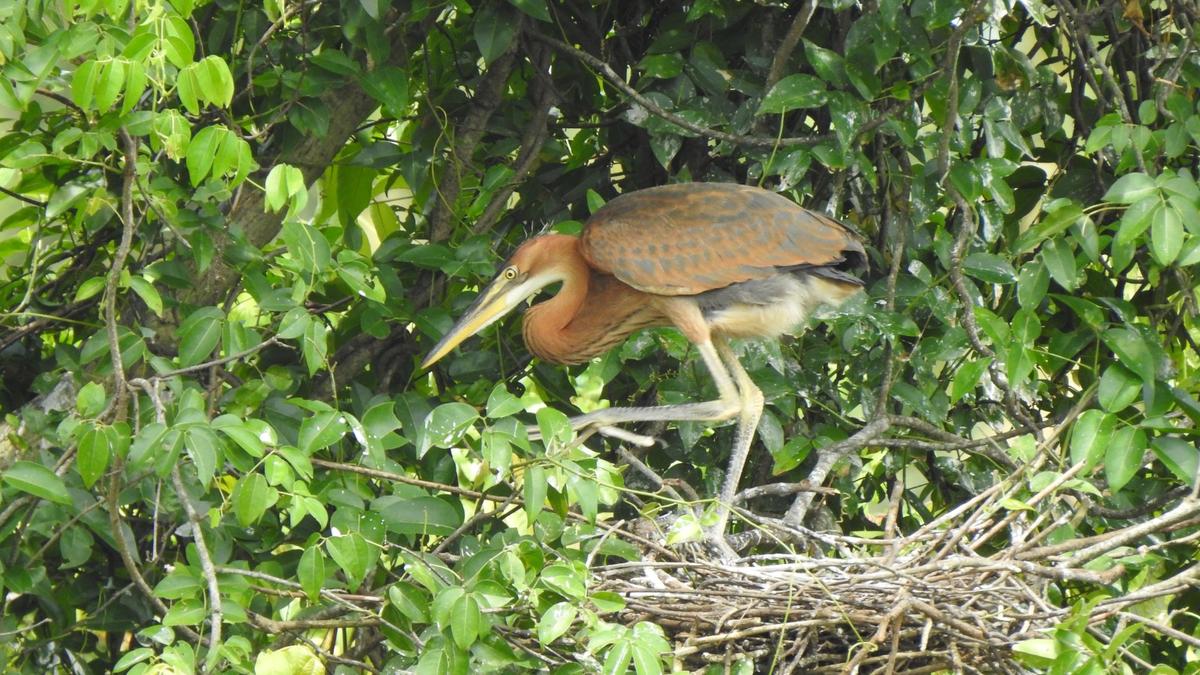Over 1,000 nests of waterbirds were recorded during Heronry Count 2025, an annual citizen science initiative that was conducted in Thiruvananthapuram district recently.
The survey was organised by WWF-India to identify and map all active heronries across the district. It documented nesting colonies of waterbirds, including those of herons, egrets, and cormorants, which are vital indicators of the health of wetland ecosystem.
Only 30 of the 36 known heronries in the district were found active. A total of 1,070 nests from seven bird species were recorded.
The species observed nesting were purple heron, Indian pond heron, little cormorant, Indian cormorant, oriental darter, black-crowned night heron, and little egret.
Among these, the Indian pond heron had the highest number of nests (750 nests), followed by little egret (118).
In addition to locating nesting sites, the survey also documented tree species used for nesting and assessed the predominant nesting stages observed at each location.
At the Pazhanchira wetlands, purple herons were seen nesting on an Indian hog plum tree, a departure from its usual nesting sites of reed beds and tall grasses.
Vizhinjam, one of the oldest known heronries in the district, recorded the highest number of nests and nesting trees, with a total of 192 nests, primarily those of pond herons, black-crowned night herons, and little egrets.
Other prominent heronries were at Kumarichantha with 127 nests, Vemmodu with 106, Venniyoor with 74, Vembayam with 56, Parassala with 53, and Shinkarathoppu with 51 nests. Trees such as copperpod, rain tree, Indian almond, Indian hog plum, Ceylon olive, mango, jamun, bamboo, Indian laurel, mahogany, tamarind, guava, jackfruit, banyan, and Indian mast mostly hosted the nests.
A cluster-based field survey approach was adopted to ensure comprehensive coverage across all terrains. On the field, teams used an app for real-time digital data collection and geotagged heronry locations. They observed activities such as nest building, reinforcing, brooding, hatched chicks, and fledglings.
Following this, the team members interacted with local people, autorickshaw drivers, street vendors, and shop owners to collect their feedback. Most saw the nesting of the birds as a sign of a healthy environment. Some concerns were also raised about bird droppings in busy public spaces. Residents at Vizhinjam reported that monkeys often raided the heronries and consumed the eggs, a natural predation that posed a threat to nesting success.
A little more than 50% of the district’s known heronries are situated within Thiruvananthapuram city limits, highlighting the potential of cities to support thriving bird populations.
Faculty and students from Iqbal College, Peringamala; Mar Ivanios College, Nalanchira; and M.G. College, Kesavadasapuram, and local community members participated in the count.
Next, the WWF-India will release a comprehensive district-level report with conservation recommendations to the Kerala Forest department and local self-government institutions concerned. Action programmes and awareness initiatives will also be conducted in partnership with colleges and local communities.
Published – July 22, 2025 09:07 pm IST






